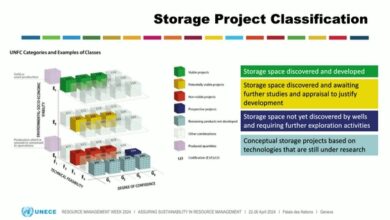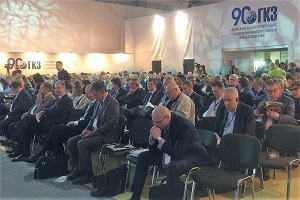Sustainable Human Resource Management

development of managing human resources, propose claims for recognizing
sustainability as the future of managing human resources, to establish the need
for Green HRM, a new paradigm towards employee satisfaction and loyalty as an
important priority for the efficient management of human resources evaluate how
the various instruments of sustainable HRM create an impact on
organizational overall performance.
Now the time has come for sustainable development. Environmental policies should
be embraced to ensure that this world remains a good place to live in.
Organizations may make a positive contribution in maintaining an ecosystem that
would be cleaner and safer via incorporating multiple essential ecological
initiatives. This simple theoretical paper deals with a step taken by
organizations to encourage sustainable growth and ecological initiatives. This
research suggests that human resources management departments must incorporate
green and environmentally friendly practices in their organizations. Green HRM
is a concept that further adds to the basic understanding of this idea.
Research Methodology:
The researcher has used reference from secondary sources like books, articles
and newspaper reports to understand the issue regarding Sustainable Human
Resource Management, hereinafter Sustainable HRM.
Introduction
Sustainable HRM can be defined as those long-term oriented conceptual
approaches and activities aimed at a socially responsible and economically
appropriate recruitment and selection, development, deployment, and release of
employees (Thom & Zaugg, 2004)[i]. There is a constant struggle with where we
are, where we need to go, what needs to be done now and what needs to be done
next, so Sustainable HRM assumes that you are constantly replenishing whatever
you are using, constantly keeping with the times to achieve your strategic
objectives. According to Kramar (2014), Sustainable HRM refers to social and
human outcomes which contribute to the continuation of the organization in the
long term, that is to a sustainable organization.[ii]
Implementation of HRM policies can be enhanced with CEO support and the receipt
of consistent messages by line and middle managers and employees. These messages
should indicate desired employee behavior, the link between HRM and performance
and the relevance of the policies. At the same time, the HR policies need to be
perceived as fair and be understood, An organization must have strong corporate
values and senior executive support.
It has a ?exible structure and HRM
practices that build the capabilities of the workforce, provide for
participative decision-making, diversity management, high levels of workplace
health and safety, and performance indicators that re?ect ethical concerns. It
has been argued that environmental and human/social outcomes are interrelated
and contribute to organizational sustainability. The development and
implementation of advanced environmental policies and capabilities are dependent
on the creation of HRM policies that create trust between employees, management
and the communities in which the organization operates.
In the 21st century, companies, which increasingly alter the market environment,
are faced with globalization, shifts in society, technological innovations and
high customer expectations. To succeed efficiently, businesses need approaches
to sustain a certain degree of competitiveness within a complex and dynamic
knowledge-based economy.
It is also eventually accepted that the strong emphasis
on real market models in organizations to use economic, social and human
resources efficiently and effectively in the immediate future will not ensure
organizational sustainability in the long term. (Docherty et al., 2002, Forslin
J and Shani, A. B. & Kira, M.).[iii] Sustainable HRM focuses on increasing the
employees’ employability; using a participatory management approach to enhance
individual responsibility and ensuring an environment of work-life balance (Zaugg,
Blum & Thom, 2001).[iv]
The following points support Sustainability as an HRM concept: i) organizational
functioning in economic and social contexts and, because of the scare human
resources, ii) aging demographics and greater concern about the sustainability
issues related to jobs. HRM cannot avoid social debate about sustainability and
the need to make contributions to sustainable development.
Ehnert et al. (2014) asserted that besides the short-termism of performance,
active engagement in renewal, regeneration and reproduction of organizations’
resources for long-term survival are also neglected. Hence, rethinking resource
management including current and potential (future) human resources is
essential. Incorporation of sustainability in organizations’ strategy helps the
realization of corporate sustainability goals (Ehnert, 2009; Kellerman, 2010;
Cohen, 2010; De Prins, 2011), particularly in the presence of increasingly
challenging worldwide issues such as climate change, environmental problems,
world population growth, escalation of social disparity, and poverty.
Ehnert (2009a) claims that these trends highlight the need for more sustainable
HRM practices and regards sustainability as having a strategic potential for HRM.
In this regard, Ehnert et al. (2014b) define sustainability as a concept for
providing new solutions and for making economic systems and organizations more
viable over the long term and less harmful to society.
Background / Literature
Sustainability and strategic HRM are very rich literature. However sustainable
HRM is a growing, rapidly emerging field.[v] The term sustainability can be
used in different aspects which are concerned with meeting the needs of people
today without compromising the ability of future generations to meet their own
needs. (World Business Council for Sustainable Development,
2005).[vi]
Sustainability and sustainable development are synonymously used
for the notions (Filho, 2000).[vii] Dyllick and Hockerts (2002) noted that the
term sustainability has been influenced mainly by three different stakeholder
groups; ecologists, business strategy scholars, and the United Nation’s World
Commission on Environment and Development (WCED, 1987), called the Brundtland
Commission. Some authors believe sustainability first appeared as a concept in
the forestry sector, before it was adapted by the ecological movement concerned
with the over-exploitation of natural and environmental resources (Leal Filho,
2000). While ecologists focus on sustainability’s ecological dimension � the
protection of the natural environment � the traditional goal of business
strategy scholars is economic sustainability of organizations (Dyllick &
Hockerts, 2002).[viii]
From a business perspective, sustainability has been defined as a company’s
ability to achieve its business goals and increase long-term shareholder value
by integrating economic, environmental and social opportunities into its
business strategies (Symposium on Sustainability, 2001, Wirtenberg et al
2007).[ix]
Evidence is accumulating rapidly that corporate
social-environmental performance maybe strongly associated with financial and
marketplace success (Cusack, 2005; Innovest Strategic Value Advisors, 2006;
Wirtenberg et al 2007), and that the investment community and corporate people
appear to be focused increasingly on the degree to which firms are managed with
the compliance of sustainability (Dixon, 2003).[x]
The three-fold approach to sustainability focuses both on an organization’s
external influences and on its internal influences. It also addresses the
sustainability of short-term and long-term effects on a variety of the
organization’s shareholders. In other words, sustainable HRM is economically
rationale for companies to invest in the survival of their sources for resources
if the functioning of these is endangered (Ehnert 2006).[xi]
Sustainable HRM is interpreted as a cross-functional task (Ehnert 2006)[xii].
Sustainable HRM is long-term oriented conceptual approaches and activities
aimed at a socially responsible and economically appropriate recruitment and
selection, development, deployment, and release of employees. (Zaugg & Thom,
2004: 217).[xiii] Sustainable HRM could help sustain employee dignity in the
case of staff reduction and warranting their employment on the job market (Zaugg
& Thom, 2001).[xiv] Thom & Zaugg (2004) stated that, a sustainable HR policy
focuses on implementing proper, transparent procedures for recruitment and
retention, training and development, performance management and motivation and
employee engagement and it is a conceptual approach and long-term oriented
activity in developing socially viable and responsible policies for recruitment
and retention, employee engagement, deployment, and motivation.[xv]
Wirtenberg et al (2007) mentioned that, implementing sustainable human resource
policies help in creating a more productive and motivated workforce which
eventually led to organizational success.[xvi] Ehnert (2009) mentioned that,
sustainable HR model is that it anticipates on the short term and long-term
effects of implementing a policy and measures organizational success in social
and environmental dimensions and not just by the financial aspect. It also
utilizes the power of human resource management to develop and empower employees
by building a conducive work environment.[xvii]
Several studies have shown the connection between sustainability and the
management of human resources; and a new approach was established as sustainable
management of human resources.
- Ehnert, 2006:
Sustainability issues and human resource management – The
Sustainability perspective of HRM raises awareness for ambiguities and dualities
in HRM, unintended negative side effects of HR practices, social
rationalities. [xviii]
� - Ehnert, 2009:
Sustainability and Human resource management – Sustainable HRM
is about to change a traditional way of managing human resources for long-term
viability and sustain development. This approach covers treating HR socially
responsible and to foster well-being and health in dimensions of social justice
and social legitimacy. [xix]
� - Kramer, 2014:
Strategic HRM and sustainable HRM – Applications of
sustainability concepts in human resource management emerged a new approach-
Sustainable HRM has different features from Strategic HRM. It acknowledges
social or human outcomes rather than financial outcomes.[xx]
�
Chapter I: Historical evolution of human resource management
Human resource management is a field of constant evolution and transition. As
well, there is no standard model or an ideal type of HRM approaches, to suit
all organizations, and thus, there are different models to describe HRM
evolution and management (Ahmed and Kazmi, 1999; Gratton and Truss, 2003).[xxi]
The concept and processes of strategic human resource management (SHRM)
developed in the late The 1970s and the 1980s as a way of managing employees in
an increasingly turbulent and fast-changing, uncertain environment. One of the
most prominent factors in history for the management of human resources was
primarily scientific research (1903) by Frederic W. Taylor, who proposed three
principles that were the basis of modern HRM according to Jamrog and Overholt
(2004):
- The Human Resource appointed for the job must be physically,
mentally fit for the job and those who aren’t fit must be removed. - The Human resource must have trained to carry out the given specific
task. - The Human Resources must be given incentives or rewards.[xxii]
Between 1950 and 1960, was the deployment of the automobile industry, promoting
concern for ef?ciency and performance, and parallel to it, the implementation of
the sub systems of HR, known as the Technicist phase by Wood
(1995).[xxiii] During this period, despite the knowledge and understanding of
how people behave in organizations, the personnel management function was still
regarded as a records unit with operational character (Jamrog and Overholt,
2004).[xxiv]
The transition from personnel management to human resources management had begun
mainly with the concepts divulged by North American authors between the 1960 and
1970 and since then, the term ��HRM” has been increasingly adopted worldwide
(Ahmed and Kazmi, 1999).[xxv]
The 1980s also saw the evolution of HRM to the strategic management of human
resources. From the moment they began to identify the link with organizational
effectiveness was justi?ed for its approval and its role within organizations
(Ewing and Caruana, 1999), no longer being seen only to answer legal
questions.[xxvi]
HRM encompasses Strategic HRM, which is a more speci?c approach to managing
people to improve organizational performance and measures the impact of these
strategies on organizational performance. The concept of Strategic HRM evolved
in several ways. Strategic HRM can be expressed in terms of planned human
resource activities and deployments designed to achieve an organization’s
objectives Strategic HRM integrated the HRM activities with organizational
strategic objectives in an organizational context.
These include the development
of theoretical frameworks, views about the speci?c contributions to
organizational performance and the speci?c �bundles’ of HR practices which
include high-performance work systems (HPWS) which consist of selective
recruitment and selections, extensive employee development and participation in
decision-making. It also assumes that effective HRM activities improve
organizational performance. (Schuler and Jackson 2005; Boxall and Purcell
2008).[xxvii]
There is a need for more discussion on what sustainable HRM is, what is the
role of HRM in implementing the idea of sustainability in the organizations and
what is the role of HRM in developing sustainable HRM? As consequences of
actions, there is a need for empirical research on how organizations and
employees perceive sustainable HRM, and, how sustainable HRM implemented.
Chapter II: Sustainable development: The role of green HRM
The time of Sustainable HRM has come. Governments should seriously consider
working out mechanisms with the private sector to draft out plans favoring and
protecting the environment. Organizations under the name of Corporate Social
Responsibility (CSR) claim to pay-back to the environment, but they need to go
beyond normal activities and adopt more practices in routine for the better
implementation of their green initiatives, and these green initiatives can be a
part of the broader CSR as well (Mandip, 2012).[xxviii]
Ahmad (2015) highlights
the introduction of areas such as Green Accounting, Green Marketing, Green
Retailing and others. Multinationals such as Toshiba, LG, and Sony are among the
few brands that are on this mission. Toshiba Environment report defines Green
Management as, Green Management is an initiative aiming at continuously
improving the foundation of environmental management, such as the development of
personnel responsible for environmental activities, environmental management
systems, and environmental communication as well as conservation of
biodiversity. [xxix]
The green management system is a dynamic and constant administration
arrangement of exercises and procedures to screen, avoid and control pollutants
of nature (Abbaspour, et al., 2006)[xxx]
According to Denisi and Griffin (2009), HRM is the comprehensive set of
managerial activities and tasks concerned with developing and maintaining a
qualified workforce in ways that contribute to organizational effectiveness. HRM
is a well-known and understood concept; therefore, the authors do not focus more
on establishing the importance or basic understanding of this term. GHRM is
relatively a new idea and is gaining limelight with the acknowledgment of the
importance of environmental concerns and role organizations can play.[xxxi]
Green HRM is not a stand-alone concept. Sharma and Gupta (2015) are also of the
view that Green HRM is a holistic and wider application of the notion of
sustainability to an organization and its personnel[xxxii]. Green actions can be
inculcated into various steps or processes in an organization. Green HRM
involves the use of HRM to support sustainable use of resources in organizations
(Rani and Mishra, 2014).
Some organizations, such as those mentioned in the
introductory part of this paper, present themselves as Green, they are working
on building their image as Green organizations to capitalize on this goodwill
image. The GHRM framework is not complex and may not require a fundamental shift
in the structure of HRM functions but at the same time have a positive impact in
the long run.[xxxiii] GHRM can be more fruitful if it is adopted by the
organizations as part of the broader sustainable development.
Ahmad (2015) reiterates that Green HR efforts have resulted in increased
efficiencies, cost reduction, employee retention, and improved productivity,
besides other tangible benefits. Organizations need to become proactive and go
for practices that can help them grow and at the same time enable organizations
for paying back to society. It is imperative to mention that literature about GHRM and its implementation is mostly available in the context of developed
economies and not in developing countries.
It is high time that developing
countries should acknowledge the importance of a greener sustainable environment
and counter the growing global warming issues. GHRM can be one small but
effective strategy as a part of the broader mission.[xxxiv] The Green HRM model
can be assessed and evaluated using a method developed by Tang et al. (2017) to
support the research. [xxxv]
Conclusion, Limitations, Implications:
Sustainable HRM is an extremely new subject for HR and empirical studies to
evaluate and demonstrate best practices for more sustainable HRM-based
organizations. Sustainability is a strategic issue for HRM that is necessary
for a company’s long-term access to resources needed for business in the future
including human resources and long-term viability to maintain the social
legitimacy of their commercial operations for which they need to control the
risks from producing negative externalities on natural and social environments (Ehnert
et al., 2014c).[xxxvi]
This ultimately leads to the long-term sustainability and
capability of organizations as well as resilience and sensitivity to external
environmental change within those organizations that positively influence their
efficiency and effectiveness. The paper has a limitation is that no specific
organizational sustainable HRM analysis has been made. Future research could be
made on some specific organizational aspects
To summarize the findings, some key characteristics of a sustainability
perspective in HRM derived in this study and the related theoretical literature
are listed in the following: Having a long-term approach and foresight,
Creating organizational dynamics, Emphasizing on creating equal and
non-discriminatory learning opportunities, regeneration and development of HRs,
the implementation of appropriate policies to create work-life balance including
flexible or floating working hours and distance working.
Targeted, a diverse,
flexible, and motivational reward system that is consistent with sustainability
goals, Caring for the interests of different groups of stakeholders, Caring for
the health and safety of HRs, Efforts to gain and maintain social legitimacy
through long-term investment appreciation and responsibility towards society and
other stakeholders, make use of the restrictions and turn them into
opportunities through creativity and innovation, Gaining sustainable competitive
advantage, Creating corporate sustainability.
In sum, Sustainable HRM can be
viewed as facets of modern integral management model, in continual dynamic
interaction that brings about a potential for improved competitive advantage and
business performance and as the opportunity for HR to prove its own legitimacy
and strategic position.
End-Notes:
- Thom, N. & Zaugg, R. J. (2004). Nachhaltiges und innovatives
Personalmanagement: Spitzengruppenbefragung in europ�ischen Unternehmungen
und Institutionen, in E. J. Schwarz: Nachhaltiges Innovations management
(pp. 217-245). Wiesbaden: Gabler. http://dx.doi.org/10.1007/978-3-66310862-7_11 - According to Kramar (2014), sustainable HRM refers to social and human
outcomes which contribute to the continuation of the organization in the
long term, that is to a sustainable organization. - Docherty, P., Forslin, J., Shani, A. B. & Kira, M. (2002). Emerging Work
Systems: from Intensive to Sustainable. In P. Docherty, J. Forslin & A.B. Shani
(Eds.), Creating sustainable work systems. Emerging perspectives and practice
(pp. 3-14). London: Routledge - Thom, N. & Zaugg, R. J. (2004). Nachhaltiges und innovatives
Personalmanagement: Spitzengruppenbefragung in europ�ischen Unternehmungen und
Institutionen, in E. J. Schwarz: Nachhaltiges Innovations management (pp.
217-245). Wiesbaden: Gabler. http://dx.doi.org/10.1007/978-3-66310862-7_11 - Mr. Ravi Kumar, Sustainable HRM: An Evolution of a New Approach,
International Journal of Management, Technology And Engineering, 8, XI, NOVEMBER
2018, 167. - World Business Council for Sustainable Development, 2005
- Fillo (2000), Sustainable HRM and Sustainability.
- Dyllick, T. and Hockerts, K 2002, �Beyond the Business Case for Corporate
Sustainability?, Business Strategy and the Environment, 11(2), 130-141. - Symposium on Sustainability � Profiles in Leadership (October 2001). New
York City, Wirtenberg et al 2007. - Dixon, F 2003, �Total Corporate Responsibility: Achieving Sustainability
and Real Prosperity?, Ethical Corporation Magazine (December) - Ehnert, I 2006, �Sustainability Issues in Human in Human Resource
Management: Linkages, theoretical approaches, and outlines for an emerging field?. Paper prepared for 21st EIASM.
SHRM Workshop, Aston, Birmingham, March 28th – 29th, 2006 - Ibid 9
- Supra 2, 217
- Supra 2, 218
- Supra 2, 218
- Supra 7
- Ehnert, I. (2009), Sustainable Human Resource Management: A Conceptual
and Exploratory Analysis From a Paradox Perspective, Berlin: Physica-Verlag. - Ehnert, I. (2006). Sustainability Issues in Human in Human Resource
Management: Linkages, theoretical Approaches, and Outlines for an Emerging
Field. Paper prepared for 21st EIASM SHRM Workshop, Aston, Birmingham, March
28th-29th, 2006. - Ehnert, I. (2009a). Sustainability and Human Resource Management:
Reasoning and Applications on Corporate Websites. European Journal of
International Management, 3(4), 419-438. http://dx.doi.org/10.1504/EJIM.2009.028848 - Kramar, R. (2014). Beyond strategic human resource management: Is
sustainable human resource management the next approach? International Journal
of Human Resource Management, 25, 1069-1089. - Ahmed, F. and Kazmi, A. (1999), ��Historical evolution of strategic human
resource management”, Malaysian Management Review, Vol. 34 No. 1. - Jamrog, J. and Overholt, M.H. (2004), ��Building a strategic HR
function: continuing the evolution”, Human Resource Planning, Vol. 27 No.
1, pp. 51-63 - Wood, T. Jr (1995), ��Organizational change and transformation of the
human resources function”, in Wood, T. Jr (Ed.), Organizational Change:
Deepening Current Topics in Business Administration, Atlas/Coopers & Lybrand, Sa
�o Paulo, pp. 221-42. - Supra 20
- Supra 19
- Ewing, M.T. and Caruana, A. (1999), ��An internal marketing approach to
public sector management: the marketing and human resources interface”,
International Journal of Public Sector Management, Vol. 12 No. 1, pp. 17-26. - Schuler, R.S., and Jackson, S.E. (2005), �A Quarter-Century Review of
Human Resource - Mandip G. Green HRM: People management commitment to environmental
sustainability. Research Journal of Recent Sciences. 2012; 1:244-252. - Supra 19
- Abbaspour M, Karbassi AR, Khadivi S. Implementation of green management
concepts in sport complexes. International Journal of Environmental Science and
Technology. 2006; 3(3):213-219. - Denisi Angelo S, Ricky Griffin W. HRM: An Introduction. Houghton Mifflin
College/Cengage Learning India, 2009. - Sharma R, Gupta N. Green HRM: An Innovative Approach to Environmental
Sustainability. Twelfth AIMS International Conference on Management. 2015,
825-830 - Rani S, Mishra K. Green HRM: Practices and Strategic Implementation in
the Organizations. International Journal on Recent and Innovation Trends in
Computing and Communication. 2014; 2(11):3633-3639. - Supra 19
- Tang G, Chen Y, Jiang Y, Paill� P, Jia J. Green human resource management
practices: scale development and validity. Asia Pacific Journal of Human
Resources. 2018; 56(1):31-55 - Ehnert, I. (2014). Paradox as a lens for theorizing sustainable HRM. In
I. Ehnert, W. Harry, & K. J. Zink (Eds.), Sustainability and Human Resource
Management (pp. 247-271). Berlin: Springer.



